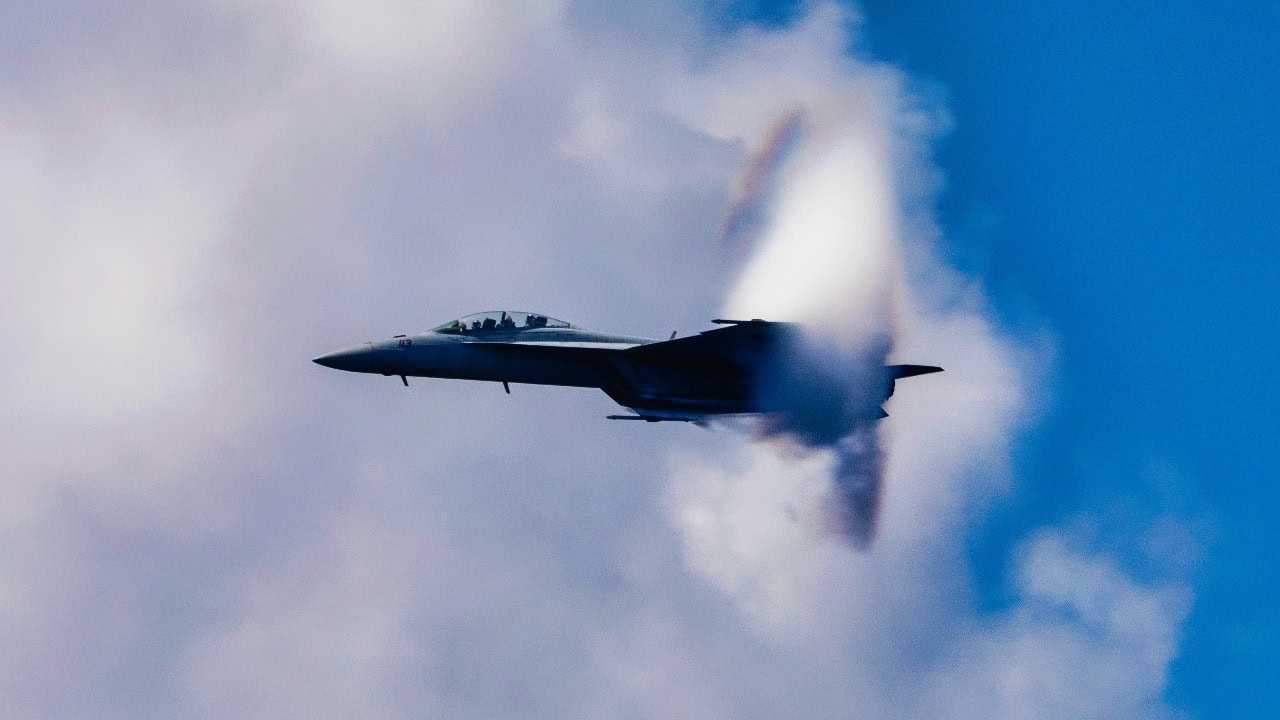Summary and Key Points: The U.S. Navy’s next-generation F/A-XX fighter promises significantly greater combat range—around 955 miles—than the Super Hornets it replaces.
-Yet, concerns remain whether this increased reach is sufficient against China’s formidable DF-26 anti-ship ballistic missiles, which threaten carriers from over 3,000 miles away.
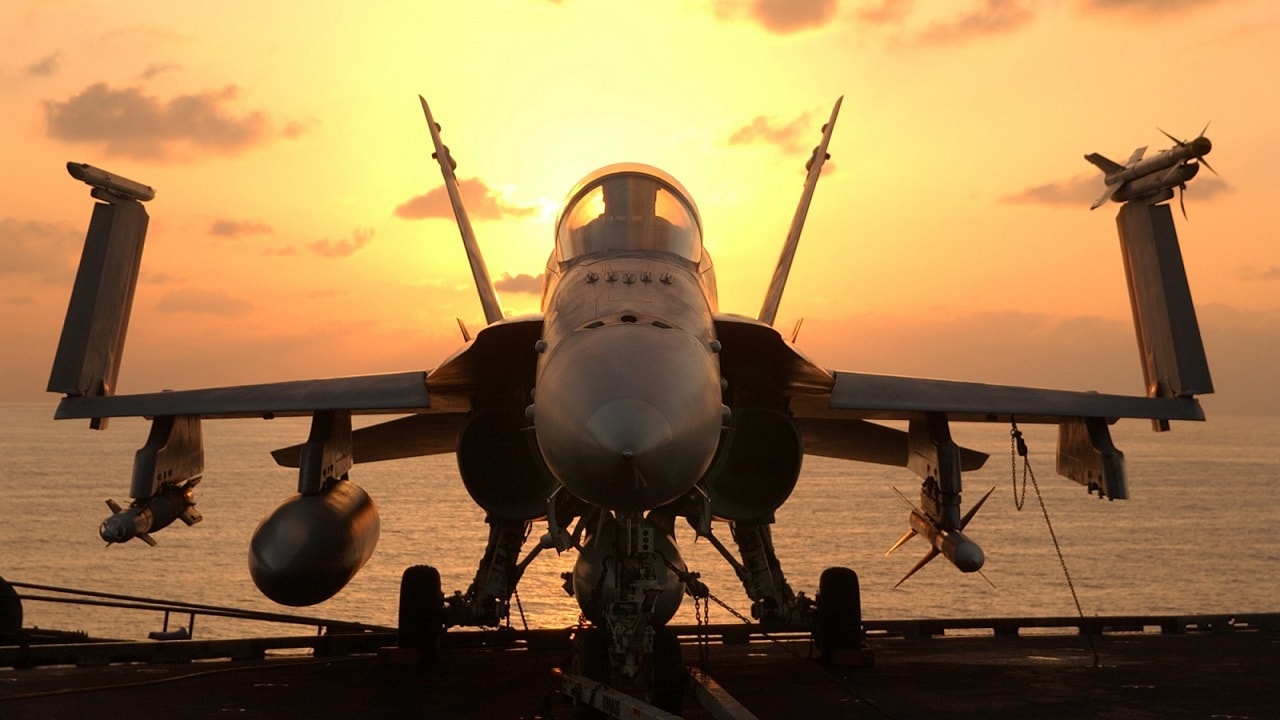
At sea aboard USS John C. Stennis, December 18, 2001 – After an early morning round of flight operations, an F/A-18 Hornet awaits the next round of combat flight operations aboard the USS John C. Stennis (CVN 74). Stennis and her embarked Carrier Air Wing Nine (CVW-9) are supporting Operation Enduring Freedom. U.S. Navy photo by Photographer’s Mate 3rd Class Jayme Pastoric
-Unlike the Air Force’s larger, land-based F-47, Navy jets face strict carrier deck size constraints, limiting their potential size and fuel capacity.
-The Navy’s solution: the MQ-25 Stingray drone tanker, capable of dramatically boosting combat radius. Ultimately, defeating China’s missile threat will require coordinated joint efforts involving land-based assets, ensuring carrier groups remain effective yet protected.
F/A-XX and the China Challenge
The US Navy’s next-generation fighter has yet to be revealed, but we know one thing: it will fly and fight farther than current fighters. The F/A-XX fighter will have a combat range of nearly 1,000 miles, more than the F/A-18E/F Super Hornet strike fighters it will replace.
But is that enough, given China’s long-range anti-ship missiles that threaten America’s carrier fleet?
F/A-XX Needed More Range
The F/A-XX fighter is slated to be the Navy’s first sixth-generation fighter and the first carrier-borne sixth-generation combat aircraft. The fighter, capable of both fighter and attack missions, will replace newer F/A-18E/F Super Hornets not already replaced by the F-35C Lightning II.
Once the purchase is complete, the air wing should transition from an all-Hornet wing to a mixed F-35C and F/A-XX force. Both Boeing and Northrop Grumman are in the process of building their vision of the jet, a decision which is expected soon.
Few details are known about F/A-XX. One detail reported by Breaking Defense is that the aircraft will have greater range than the Super Hornet. Rear Adm. Michael Donnelly, director of the Air Warfare Division for the Chief of Naval Operations, told attendees at the Sea Air Space expo that the jet would have a range “probably” 125 percent of “what we’re seeing today,” giving the embarked carrier air wing “flexibility [and] operational reach.”
Donnelly did not specify which aircraft he was comparing with, but a reasonable assumption is that he used the F-35C as a benchmark. As the carrier-borne version of the F-35, the F-35C has the longest range of all three Lightning II variants.
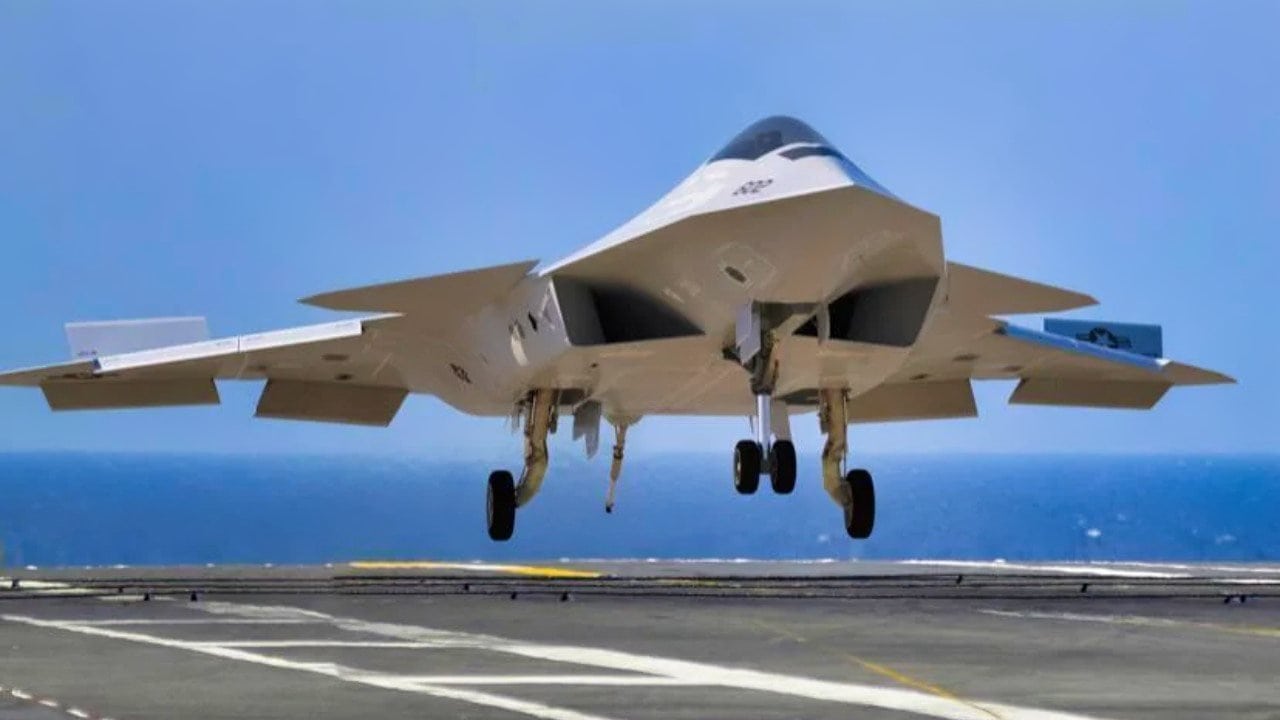
F/A-XX. Image Credit: Creative Commons.
According to the 2023 DoD Selected Acquisition Report on the F-35, the -C variant has a combat range of 664 nautical or 764 statute miles. Combat range is typically defined as the distance an airplane can travel with a munitions load to accomplish its mission. The definition can change among the air forces of different countries. The range also depends on the mission, assigned fuel, and munitions, so it’s an imperfect benchmark.
If the F-35C has a combat range of 764 miles, a F/A-XX with a combat range 25 percent greater would equal approximately 955 miles.
That combat range falls short of what analysts think the Navy needs. The Navy needs an aircraft with a long enough range to “out-stick” China’s People’s Liberation Army Rocket Force. However, the PLARF’s longest-range missile capable of dealing serious damage to carriers, the DF-26 anti-ship ballistic missiles, has a 3,100-mile range, and it is unlikely that any carrier-based aircraft could allow a task force to strike DF-26 launchers with impunity. Unlike its Air Force counterpart, F/A-XX will face a hard ceiling on how far it will fly.
One of the most significant differences between the Navy’s F/A-XX and the Air Force’s F-47 (previously the Air Force’s NGAD) fighter is that the Navy’s jet must fit on a carrier flight deck. The F-47, operating from expansive bases with a luxurious amount of tarmac to park jets—and take off and land—can grow as large as is feasible. Today’s jets must be stealthy from the get-go, with all fuel and munitions stored inside the fuselage.
Weapons and drop tanks stored outside the fuselage on the wings and pylons increase a jet’s radar signature. This results in fifth- and sixth-generation fighters carrying fewer munitions than their fourth-generation predecessors, with little prospect of increased range or weapons without growing physically bigger.
A Nimitz or Ford-class aircraft carrier typically embarks around 70-75 aircraft at once, including 40-44 strike fighters, with an upper limit of around 90 aircraft. The F/A-18E/F Super Hornet is 60 feet long, while the F-35C is 51 feet long. Although carriers have supported aircraft as large as the 77-foot-long A-5 Vigilante, the A-5 largely served as a reconnaissance aircraft, and no carrier embarked more than a half dozen or so at any given time.
In addition, a stealth aircraft designed for greater internal volume would typically be wider than a non-stealthy aircraft, making for a tighter fit on the carrier flight deck and ship’s hangar. All this means the twenty or so F/A-XX fighters that will call a carrier home will face size constraints their landlubber F-47 counterparts will not. This difference, in turn, will limit their unrefueled range.
What Happens Now?
If the Navy wants to increase the range of its strike fighters, it can’t make them bigger. The solution is to produce a dedicated tanker, and the Navy started work on that nearly a decade ago.
The MQ-25 Stingray unmanned aerial vehicle is the Navy’s first carrier-based drone, and the service wisely plowed its first effort into a tanker that can support the entire air wing rather than a long-range fighter or strike aircraft.
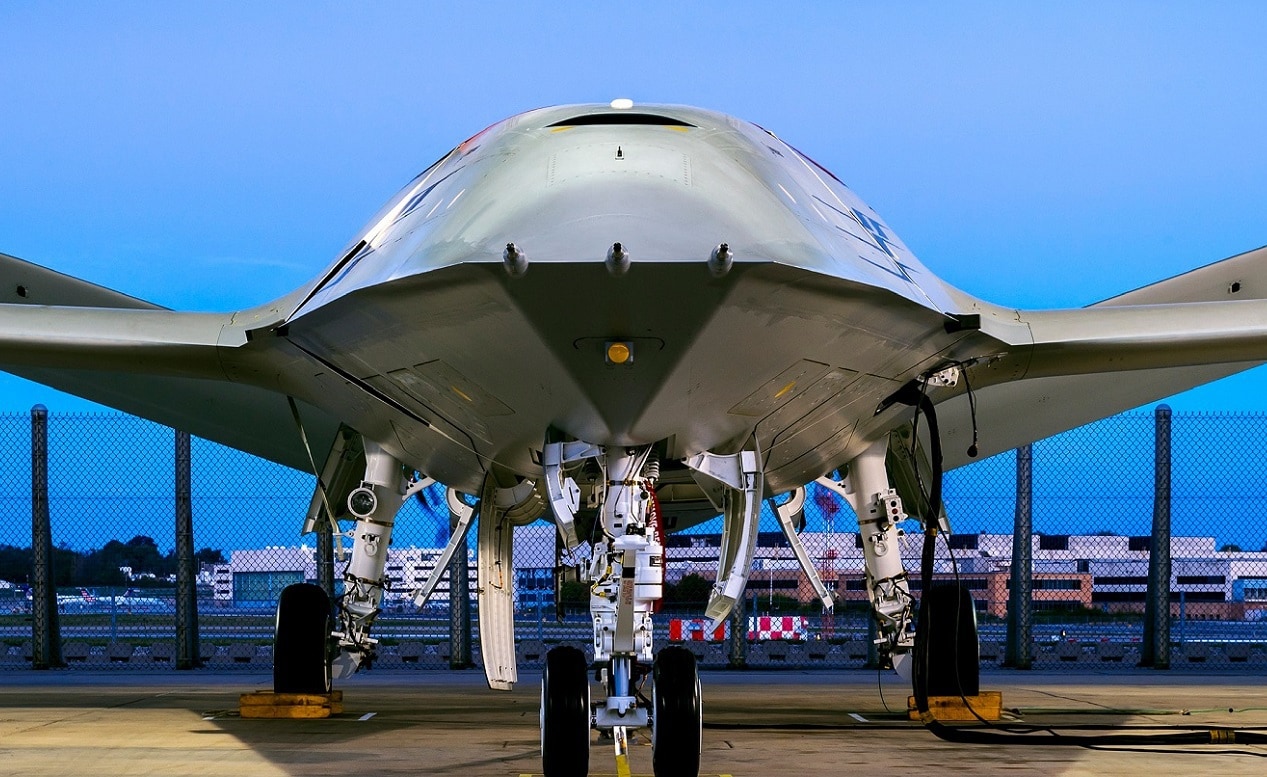
MQ-25. Image Credit – Creative Commons.
The MQ-25 can carry 15,000 pounds of fuel, while the F-35C’s internal fuel tanks can store up to 20,000 pounds. This capability suggests that one tanker supporting one fighter can extend an F-35’s combat radius by 75 percent to a total of 1,337 miles.
The MQ-25 will similarly boost F/A-XX’s combat radius well over 1,000 miles.
Even with tanker support, it is unlikely that an aircraft carrier will be able to bomb China’s longest-legged missiles without risking attack. It may be that other assets, such as land-based cruise missiles or long-range bombers, will have to attack DF-26 missile sites.
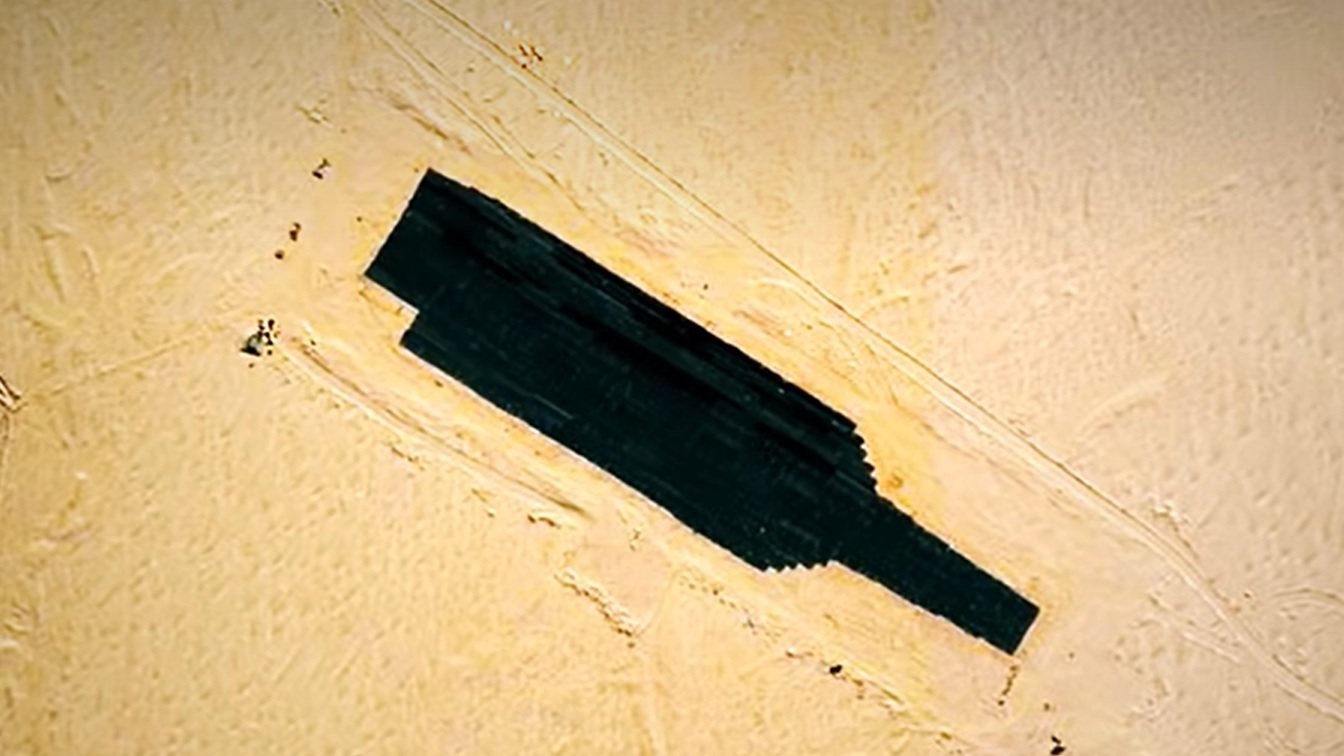
China’s missile testing range using a cut out of an aircraft carrier. Image Credit: Creative Commons.
This asymmetric response involves less risk to the carrier while opening up future opportunities for it to contribute to the campaign with its F/A-XX fighters. The fighters, in turn, bring capabilities land-based missiles and bombers don’t have.
This is the essence of jointness, the ability of the armed services to support one another towards a common goal mutually. The new Navy fighter won’t have the range of a ballistic fighter, but it won’t disappoint.
About the Author: Kyle Mizokami
A 19FortyFive Contributing editor, Kyle Mizokami is a defense and national security writer based in San Francisco. His work has appeared in Popular Mechanics, Esquire, The National Interest, Car and Driver, Men’s Health, and many others. He is the founder and editor for the blogs Japan Security Watch, Asia Security Watch, and War Is Boring.

